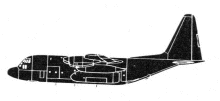Incident Overview

Description
A de Havilland Canada DHC-6 Twin Otter airplane was destroyed when it crashed into a steep snow- and ice-covered mountain slope at 13,000 feet 3960 metres) asl in the Queen Alexandra range in Antarctica. All three crew members were killed. The airplane operated on a VFR repositioning flight from Amundsen-Scott Station to the Zucchelli Station at Terra Nova Bay, Antarctica. There was a solid cloud cover in the area and the crews view of Mount Elizabeth was likely to have been obscured. The crew probably received a terrain warning 45 seconds before impact. A climb was initiated, but aircraft climb performance was not sufficient to avoid the terrain. Search and rescue workers made visual contact with the plane’s crash site late at night on January 25. Findings as to causes and contributing factors: The crew of C-GKBC made a turn prior to reaching the open region of the Ross Shelf. The aircraft might have entered an area covered by cloud that ultimately led to the aircraft contacting the rising terrain of Mount Elizabeth.
Source of Information
http://www.maritimenz.govt.nz/news/media-releases-2013/20130124c.asp, http://www.cbc.ca/news/world/story/2013/01/26/antarctica-plane-located.html, http://tsb.gc.ca/eng/medias-media/communiques/aviation/2013/a13f0011-20130319.asp, http://www.skybrary.aero/index.php/DHC6,_En_route,_Mount_Elizabeth_Antarctica,_2013http://www.maritimenz.govt.nz/news/media-releases-2013/20130124c.asp, http://www.cbc.ca/news/world/story/2013/01/26/antarctica-plane-located.html, http://tsb.gc.ca/eng/medias-media/communiques/aviation/2013/a13f0011-20130319.asp, http://www.skybrary.aero/index.php/DHC6,_En_route,_Mount_Elizabeth_Antarctica,_2013Primary Cause
Aircraft climb performance was insufficient to avoid terrain.Aircraft climb performance was insufficient to avoid terrain.Share on:


